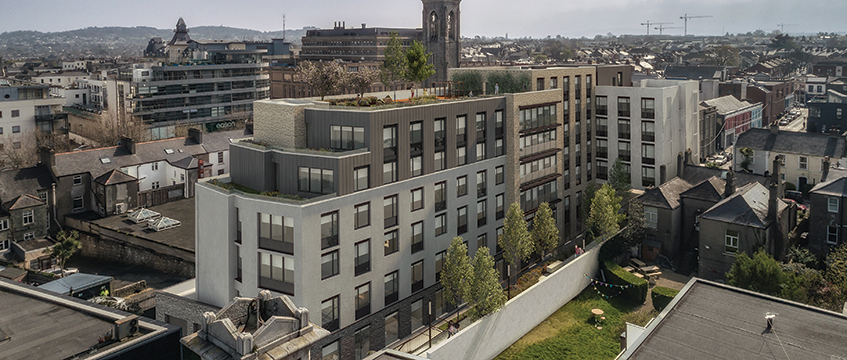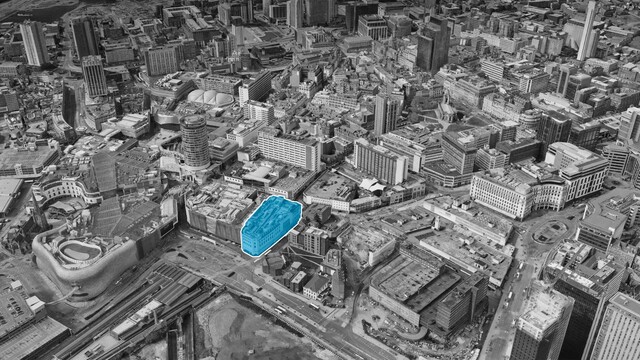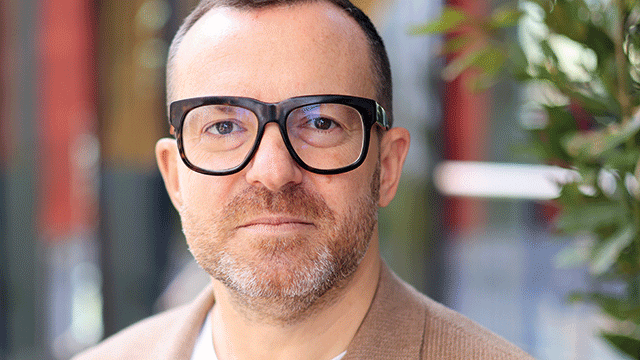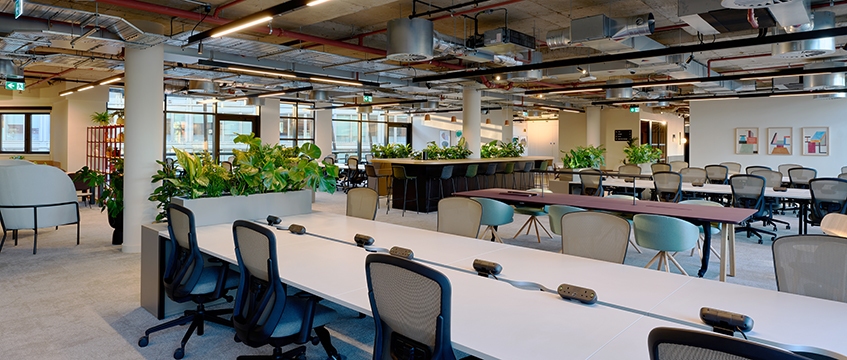Small steps to tackling Dublin’s housing crisis
Left-wing Irish republican party Sinn Féin has surged in popularity on a campaign of health and housing for young people.
Housing is high on most political agendas, but it has been centre stage in Ireland’s general election. With young people priced out of Dublin, amid the highest living costs of any eurozone city, competing political parties must now wrestle with housing policy and the private sector if they are to live up to their promises to deliver more homes.
“It is a very clear indication that housing and accommodation of all types is a major issue for people,” says Bartra Capital chief executive Michael Flannery.
Left-wing Irish republican party Sinn Féin has surged in popularity on a campaign of health and housing for young people.
Housing is high on most political agendas, but it has been centre stage in Ireland’s general election. With young people priced out of Dublin, amid the highest living costs of any eurozone city, competing political parties must now wrestle with housing policy and the private sector if they are to live up to their promises to deliver more homes.
“It is a very clear indication that housing and accommodation of all types is a major issue for people,” says Bartra Capital chief executive Michael Flannery.
“If the government wants to do things on public land, the best catalyst is going to be working with the private sector, to make those things come to life. They need services from the rest of the economy, and they are going to have to take more production of accommodation from the rest of us.”
Flannery has his own solution: the developer is pioneering 16.25 sq m co-living studios for single people, incoming tech employees and key workers priced at around €1,300 (£1,090) a month.
Bartra is developing the first purpose-built co-living scheme in Ireland, with 204 bedrooms in Dún Laoghaire at Eblana Avenue. It has a pipeline of 1,000 bedrooms across six sites in planning and development and says it will more than double this. The developer has a target of 2,000 beds in Dublin and a €400m fundraise to aid an overseas expansion where it plans to invest at least €1.2bn.
Following success in Dublin, it will target cities such as Madrid, Amsterdam, London, Paris and Copenhagen.
Flannery says: “Bartra Capital is in the process of putting together our own fund to go to other European cities. It will happen in the second and third quarter of this year.
“We will target buying our own sites, but we will also partner with existing property owners and lease their properties for occupation by our operator Niche. There is an accommodation requirement in all of those cities.”
But as it pursues aggressive expansion targets, it faces a number of critics – not least from the political world.
Co-living controversy
Where housing issues have inspired politicians in Ireland, co-living has divided and agitated them further.
“It would seem that co-living itself is controversial,” says Flannery, recounting the political battles over the emerging asset class.
In March 2018, housing minister Eoghan Murphy introduced new planning guidelines for local authorities that sought to encourage high-rise development and gave guidance on “shared living”, also called “co-living”. It allows for co-living schemes in areas of concentrated employment or health campuses, with minimum single rooms of 12 sq m and a minimum of 4 sq m per person in amenity space. But, local authorities can still veto large-scale proposals.
When Bartra lodged its plans for the first 208-bed scheme, Murphy said he thought people would be excited at the prospect. In fact, there was a backlash from Green Party MEP Ciarán Cuffe, who dubbed the scheme “Dickensian”.
To the critics who bemoan the size, Flannery says: “It is a third larger than the law permits and quite a bit larger than the often‑admired schemes in the UK. There are an awful lot of Irish people that seem to think that the UK has the best way of doing it and that what we are doing is wrong – not knowing, of course, that what we are doing is larger.”
Scaling up
Amid the political wranglings, the Irish government has quietly backed Bartra’s developments with an €8m (£6.75m) equity investment from the state-owned Ireland Strategic Investment Fund.
Bartra also has backing from the banks and says it will invest €200m-300m to build 2,000 units in Dublin in schemes of around 200 bedrooms and 60,000-65,000 sq ft of development.
Despite these grand ambitions for growth, Flannery says that co-living will never be the dominant housing tenure.
“The numbers are very small and they always will be,” he says. “It is a tiny micro-part of the overall picture. But it is a kind of lightning rod.”
Last year Dublin saw just two co-living developments through the fast-track Strategic Housing Development application process. Of the 12,415 residential units approved in the four local authority districts, just 292 were co-living, making up a meagre 2.4% of the total homes and just 0.9% of bedrooms.
Flannery says there is a huge, underestimated crisis of housing for single people in Dublin and what the city does not need is more three-bedroom semi-detached houses.
“We need stuff that is built for the population as it exists now in Ireland,” he says. “People need the ability to have private space when they are single and to choose what type of private space that is.”
To send feedback, e-mail emma.rosser@egi.co.uk or tweet @EmmaARosser or @estatesgazette











